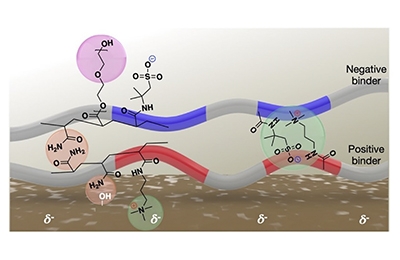Joint Research Team Uncovers Key Mechanism For Differentiating Human Pluripotent Stem Cells
The process of cellular differentiation, in which human pluripotent stem cells (hPCSs) progress from primitive to developmentally advanced states, is a fundamental aspect of life. Understanding this process not only sheds light on the basic principles of life but also holds great promise for the development of therapies for diverse diseases. The core differentiation mechanism was recently identified by researchers from POSTECH and University of California, Santa Barbara (UCSB).
A POSTECH team led by Professor Jiwon Jang and Yujeong Oh (Department of Life Sciences) collaborated with a UCSB research team (Dasol Han and Kenneth S. Kosik) to map the transcription start sites and discovered ZBTB12, a BTB (BR-C, ttk and bab) domain-containing zinc finger protein. The researchers found that ZBTB12 acts as a molecular barrier to prevent the dedifferentiation of hPSCs. Their findings were published in Nature Communications.
In their embryonic development, stem cells progress unidirectionally from a primitive state (less differentiated) to a more advanced state (more differentiated). This process is known as cellular differentiation but the underlying reasons for its one-way movement remained unclear. Studies on signaling molecules and genes to induce stem cell differentiation have been conducted, but the fundamental mechanism regulating the differentiation has remained unclear.
Meanwhile, dedifferentiation, a phenomenon in which cells revert to an earlier, less specialized state, is observed in tissue regeneration and diseases such as cancer. Retrotransposons, which make up over 40% of the human genome, have been found to be silenced in healthy tissue but upregulated in cancer, making research on their cellular functions and the mechanisms of dedifferentiation crucial in understanding the origins of various diseases.
The research team discovered a transcription factor called ZBTB12, which had not been reported before in the differentiation process of hPSCs. They also analyzed the RNA sequencing of single cells to demonstrate that ZBTB12 inhibits dedifferentiation. When ZBTB12 was deficient in hPSCs, they dedifferentiated into more primitive stem cells, preventing them from differentiating. This confirmed that the ZBTB12 gene is an essential factor in the differentiation of stem cells.
These findings enabled the researchers to report that ZBTB12 is a key factor that inhibits the expression of human endogenous retrovirus H (HERVH), a retrotransposon specific to primates, and acts as a molecular barrier to prevent hPSC dedifferentiation.
POSTECH Professor Jiwon Jang explained, “Our study has identified the molecular barrier that prevents dedifferentiation in stem cells, providing insight into the core mechanism of unidirectional stem cell differentiation, which has long remained a mystery. The discovery of this mechanism holds significant promise for enhancing our comprehension and management of age-related and cancerous ailments where cellular dedifferentiation frequently occurs.
The study was conducted with the support from the Biomedical Technology Development Program, Young Research Program (Individual Research), Basic Research Program (Individual Research), and Basic Research Laboratory Program (Group Research).

